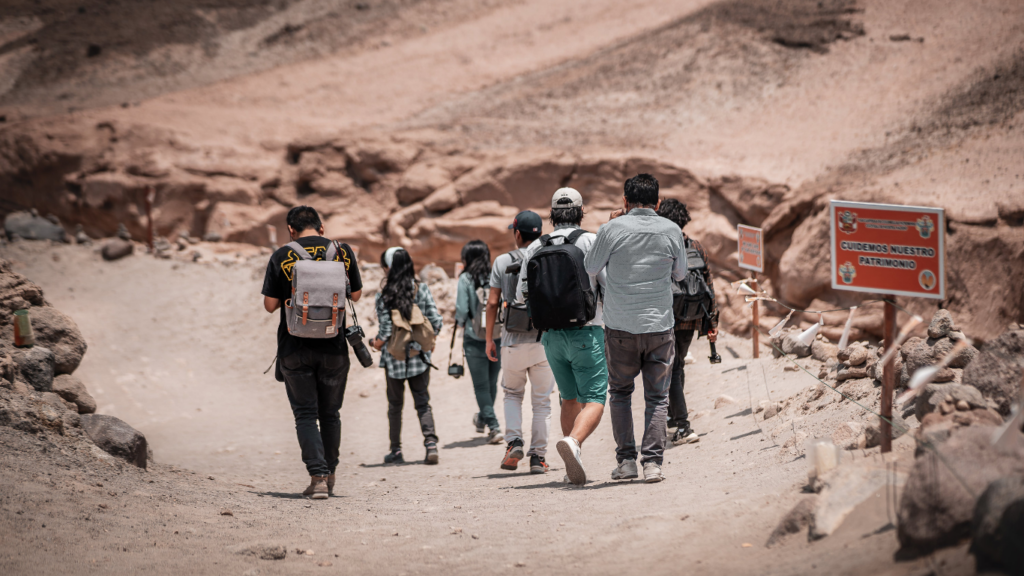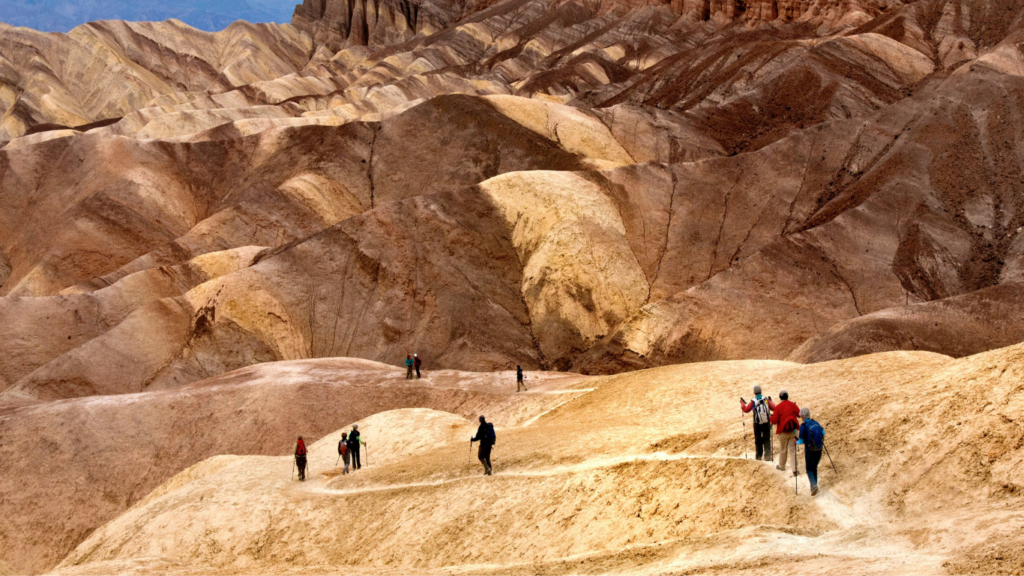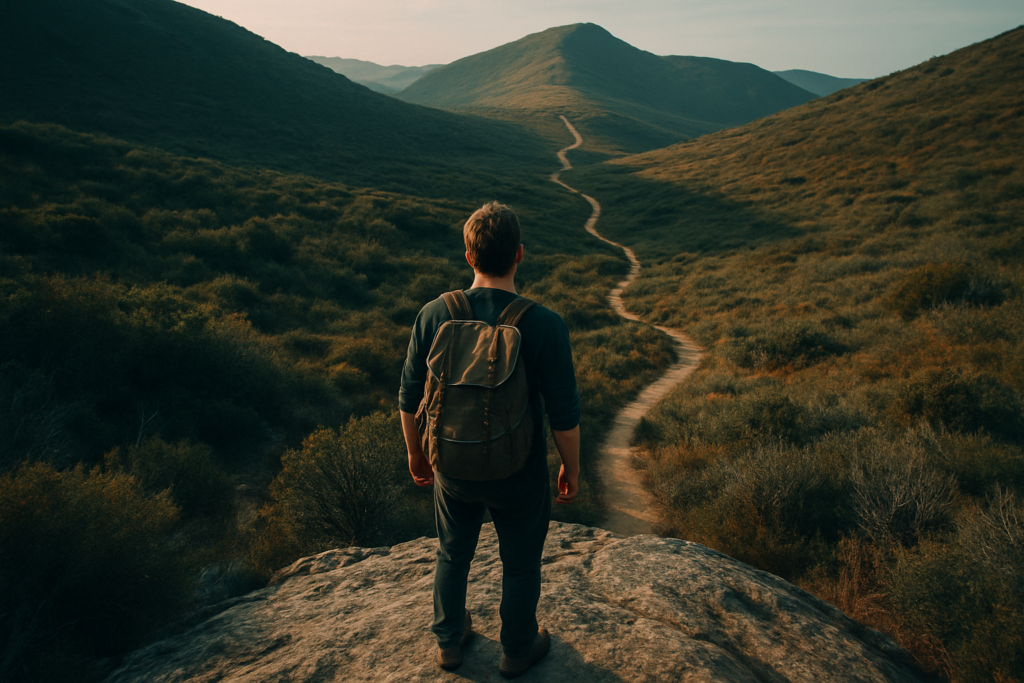Understanding Desert Hiking
Desert hiking presents unique challenges due to the harsh environment. Knowledge of key factors can significantly enhance the experience.
Terrain and Conditions
Desert terrains vary widely. Some areas have sandy dunes, while others feature rocky landscapes. Preparing for different ground types, such as by choosing appropriate footwear, ensures better stability and comfort.
Temperature Extremes
Deserts often exhibit extreme temperature fluctuations. Daytime temperatures can soar above 100°F, dropping sharply after sunset. Carrying layers of clothing helps regulate body temperature.
Water and Hydration
Hydration remains a critical concern. In the desert, the body loses moisture quickly due to the dry air. To avoid dehydration, I carry at least one gallon of water per day. Electrolyte solutions or salts can replace lost minerals.
Wildlife and Flora
Desert ecosystems host unique flora and fauna. Understanding local wildlife aids in avoiding dangerous encounters. Many plants, like cacti, store water but often have protective thorns. Respecting their space minimizes injury risks.
Navigation and Orientation
Reliable navigation tools are essential. GPS devices and physical maps should be part of my gear to avoid getting lost. Markers and landmarks aid in retracing steps if technology fails.
Sun Protection
The sun’s intensity in deserts is harsh. Sunburn and heatstroke are real dangers. Using high-SPF sunscreen, wearing hats, and UV-blocking sunglasses reduces exposure to harmful rays.
Respect for the Environment
Deserts are fragile ecosystems. Staying on marked trails and carrying out all trash preserves natural habitats. Practicing Leave No Trace principles ensures these landscapes remain unspoiled for future adventurers.
Essential Gear for Desert Hikes

Essential desert hiking gear ensures safety and comfort amid harsh conditions. Proper equipment can mean the difference between a successful hike and a hazardous experience.
Clothing and Footwear
Lightweight, moisture-wicking clothing keeps sweat at bay and regulates body temperature. Long sleeves protect skin from the sun. A wide-brimmed hat offers added shade. Durable, breathable hiking boots provide necessary foot protection and comfort on rocky, uneven terrain. Gaiters prevent sand and debris from entering shoes. Sunglasses with UV protection shield eyes from the intense sun.
Hydration Systems
Effective hydration systems are crucial for desert hikes. Carrying at least three liters of water per day is advisable. Hydration packs offer convenient access to water. Insulated bottles keep water cool in the heat. Electrolyte tablets or powders help maintain electrolyte balance, preventing dehydration. Collapsible water bottles provide additional storage space as water is consumed.
Navigation Tools
Reliable navigation tools help hikers stay on the correct path. GPS devices provide accurate location tracking. Topographic maps and handheld compasses offer backup navigation. Printed trail guides contain useful information. Personal locator beacons (PLBs) aid rescuers in emergencies. Mobile apps with offline maps can serve as additional aids, provided phones are fully charged and conserved.
Planning Your Epic Desert Hike
Effectively planning your desert hike increases your chances of enjoying the experience while staying safe. Focus on selecting an appropriate trail and timing your hike wisely.
Choosing the Right Trail
Selecting the right trail involves considering your experience level, the trail’s difficulty, and the specific conditions of the desert. Beginner trails typically range from 2 to 5 miles, featuring well-marked paths (e.g., Joshua Tree’s Hidden Valley Trail), whereas advanced trails can exceed 20 miles and include more challenging terrains (e.g., Grand Canyon’s Rim-to-Rim). Research reliable sources like the National Park Service for detailed trail information, including elevation changes, terrain types, and user reviews. Check for permit requirements, especially for popular trails.
Timing Your Hike
Choosing the optimal time of day and year to hike is crucial for desert adventuring. Aim to hike during cooler months, like October to April, to avoid extreme heat. Within a day, early morning or late afternoon, when temperatures are lower and sunlight is less intense, provides a more comfortable experience. Use apps like Weather.com to monitor forecasts and avoid days with potential weather hazards, such as extreme heat or storms. Always pack an extra layer for temperature fluctuations.
Staying Safe in Extreme Heat
Staying safe in extreme heat is crucial for a successful desert hike. Recognizing signs of heat-related illnesses and knowing first aid can make all the difference.
Recognizing Heat-Related Illnesses
- Heat Exhaustion: Causes of heat exhaustion include dehydration and prolonged exposure to high temperatures. Symptoms include heavy sweating, pale skin, rapid pulse, cramps, dizziness, nausea, and headache.
- Heat Stroke: This is a severe, life-threatening condition. Indicators include a high body temperature (above 103°F), red, hot, dry skin, rapid, strong pulse, dizziness, headache, nausea, confusion, and unconsciousness.
- Heat Cramps: Heat cramps are painful muscle spasms, primarily occurring in the legs, arms, or abdomen. They often indicate electrolyte depletion.
First Aid Tips
- Hydration: Consume water frequently to prevent dehydration. A good practice is to drink at least one liter of water per hour.
- Cooling Down: Move to a shaded area and remove excess clothing. Use cool, wet cloths on the skin to lower body temperature.
- Electrolytes: Restore electrolytes by consuming sports drinks, salty snacks, or electrolyte tablets.
- Medical Assistance: For severe symptoms like heat stroke, seek immediate medical help. If heat exhaustion or cramps persist, rest and rehydrate until the individual recovers.
Maximizing Your Desert Hiking Experience
Exploring desert landscapes offers a unique and unparalleled connection to nature. To fully enjoy these arid environments, one must balance adventure with caution.
Admiring the Scenic Views
Desert hikes showcase striking geological features, vast open spaces, and vibrant sunsets. Carry a camera or smartphone to capture these moments, and consider hiking through areas known for their rock formations, like Arizona’s Antelope Canyon, for breathtaking visuals. Observe the landscape around you and take short breaks to appreciate the panoramic views. These pauses not only allow you to savor the scenery but also provide opportunities to rest and hydrate.
Wildlife Encounters
Deserts are home to diverse wildlife, from reptiles like rattlesnakes to mammals like bobcats. Maintain a safe distance when you encounter these animals to avoid disturbing their natural habitats. Wear gear that makes noise, such as a small bell, to alert animals of your presence. This can help prevent unexpected close encounters. If you spot burrows or nests, give them a wide berth. Educate yourself about the local wildlife before your hike to recognize signs of animal activity and understand how to react if you encounter them.
By appreciating the scenery and respecting the wildlife, your desert hiking experience will be both thrilling and safe.
Top Epic Desert Hikes Around the World
Exploring desert hikes offers unparalleled adventure and beauty. Here are some of the most iconic desert hikes you can’t miss.
The Grand Canyon, USA
The Grand Canyon presents a unique hiking experience with its vast landscape and layered geology. Trails like the Rim-to-Rim, spanning 24 miles, challenge even seasoned hikers. Key points include:
- Navigation: Carry detailed maps and a GPS device for accurate route tracking in the expansive terrain.
- Water Access: Know water supply points, especially at Phantom Ranch and the Colorado River.
- Temperature Fluctuations: Prepare for temperature variations from the cool rim to the scorching canyon floor.
- Guides: Use experienced local guides familiar with the challenging environment.
- Hydration: Start with ample water and know oasis locations for refills.
- Survival Gear: Equip with sun protection and emergency communication tools, given the remote nature.




